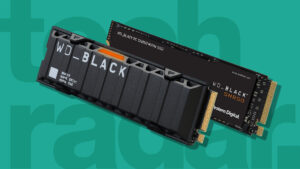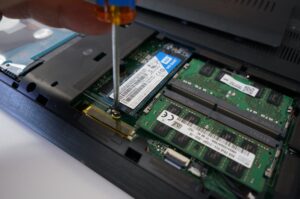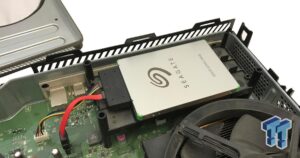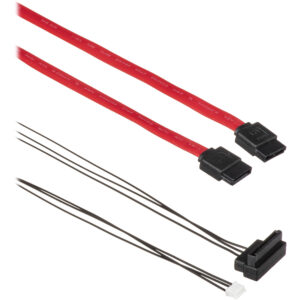What is an Internal Ssd? Speed and Storage!
An internal SSD, also known as a Solid State Drive, is a type of non-volatile storage media that stores data on solid-state flash memory.
Unlike traditional hard drives that use spinning disks and read/write heads, SSDs have no moving parts, resulting in faster access time and lower risk of mechanical failure.
The ‘internal‘ part of the name indicates that the SSD is installed inside the computer, as opposed to external SSDs that connect via USB or another interface.
An internal SSD is a high-performance, reliable, and efficient storage solution.
It significantly improves the speed of data access and overall system performance, making it an invaluable component in modern computing devices, whether it’s for everyday use or high-demand tasks like gaming and professional content creation.
9 Parameters Of Exploring Internal Solid State Drives (SSDs)
| Parameter | Description |
|---|---|
| Name | Internal SSD |
| Full Form | Solid State Drive |
| Definition | A type of mass storage device similar to a hard disk drive (HDD). |
| Function | Stores persistent data on solid-state flash memory. |
| Speed | Faster than HDDs because it uses NAND flash memory, resulting in quicker boot times and faster data transfer. |
| Lifespan | Longer lifespan as compared to HDDs due to lack of mechanical parts. |
| Noise | Produces no noise as there are no moving parts. |
| Heat Production | Produces less heat than HDDs. |
| Size | Smaller in size compared to HDDs, allows for thinner and lighter computers. |
| Cost | More expensive than HDDs due to higher manufacturing costs. |
| Types | SLC (Single-Level Cell), MLC (Multi-Level Cell), TLC (Triple-Level Cell), QLC (Quad-Level Cell). |
Key Takeaway
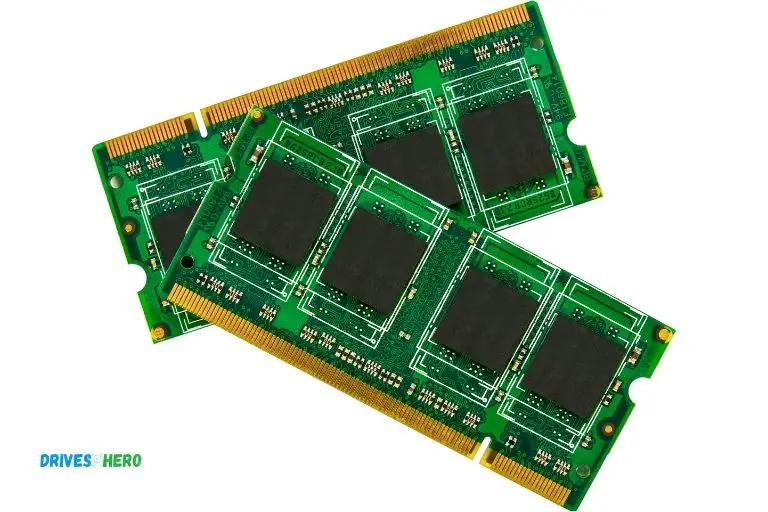
Five Facts About: Internal SSDs
Understanding The Basics
An internal SSD, or solid-state drive, is a type of storage device used in computers.
It provides faster data access and improved performance compared to traditional hard drives.
SSDs are becoming increasingly popular due to their durability and reliability.
Definition Of An Internal Ssd
- When it comes to storage solutions for computers, an Internal SSD, or Solid State Drive, is a popular choice.
- An Internal SSD is a type of storage device that is installed directly inside a computer or laptop. It has no moving parts and uses flash memory to store and retrieve data.
- This compact and efficient storage option has gained popularity due to its speed, reliability, and durability.
How An Internal Ssd Works
An Internal SSD works by utilizing flash memory technology to store data. Unlike traditional hard drives, which use spinning disks and mechanical arms to read and write data, an SSD uses integrated circuits to perform these tasks efficiently.
Here’s how it works:
When data is written to an Internal SSD, the controller sends an electrical charge to the flash memory cells, which trap electrons.
These trapped electrons represent binary values, allowing data to be stored.
When data needs to be read from the SSD, the controller retrieves the stored binary values and processes them to reconstruct the original information.
This process is much faster than the mechanical movement required by traditional hard drives.
Benefits Of Using An Internal Ssd
Improved Speed: One of the major advantages of using an Internal SSD is the significant boost in speed it provides. With faster read and write speeds, accessing and transferring data becomes much quicker, resulting in shorter loading times and improved overall system performance.
Enhanced Reliability:
Thanks to the absence of moving parts, Internal SSDs are more reliable than traditional hard drives.
This makes them less susceptible to shock, vibrations, and mechanical failures, ensuring that your data remains safe and intact.
Durability:
Internal SSDs are designed to be more durable than traditional hard drives, making them ideal for portable devices such as laptops.
They can withstand drops and impacts better, minimizing the risk of data loss in case of accidents.
Energy Efficient:
Internal SSDs consume less power compared to traditional hard drives. This energy efficiency not only helps to extend battery life in laptops and mobile devices but also reduces the overall power consumption of desktop computers, contributing to energy savings.
Noiseless Operation:
Without any moving parts, Internal SSDs operate silently, eliminating the distracting noise generated by traditional hard drives.
This makes them perfect for environments where noise reduction is essential, such as recording studios or quiet office spaces.
Types Of Internal Ssds
An internal SSD, or Solid State Drive, is a type of storage device that offers faster data access and improved performance compared to traditional hard drives.
With various types available, such as SATA, NVMe, and PCIe, users can choose the one that best suits their needs for faster file transfers and smoother computing experience.
Sata Ssds
SATA SSDs, or Serial ATA Solid State Drives, are a type of internal storage device commonly used in laptops and desktop computers.
These SSDs connect to the motherboard using a SATA interface, which allows for data transfer between the drive and the computer.
Here are some key points about SATA SSDs:
- Compatibility: SATA SSDs are compatible with most computers that have SATA ports, making them a popular choice for upgrading older systems.
- Speed: While SATA SSDs offer faster read and write speeds than traditional hard drives, they are not as fast as other types of SSDs, such as NVMe.
- Capacity: SATA SSDs are available in various capacities, ranging from smaller sizes like 128GB to larger ones like 2TB or more.
- Cost-effectiveness: SATA SSDs are generally more affordable compared to NVMe SSDs, making them a budget-friendly option for those looking to upgrade their storage.
Nvme Ssds
NVMe SSDs, or Non-Volatile Memory Express Solid State Drives, are the latest advancement in storage technology.
These SSDs use the NVMe protocol for communication, allowing for significantly faster transfer speeds compared to SATA SSDs.
Here are some key points about NVMe SSDs:
- Speed: NVMe SSDs offer much higher read and write speeds than SATA SSDs, enabling faster boot times, file transfers, and overall system performance.
- Improved Efficiency: With their faster speeds and low latency, NVMe SSDs can handle intensive tasks and workloads more efficiently.
- Form Factor: NVMe SSDs come in various form factors such as U.2, PCIe, and M.2, providing flexibility for different computer configurations and sizes.
- Compatibility: NVMe SSDs require a compatible motherboard with a PCIe M.2 slot to take advantage of their full speed capabilities.
M.2 Ssds
M. 2 SSDs, also known as Next Generation Form Factor (NGFF) SSDs, are compact storage solutions that are commonly used in modern laptops and desktop computers.
These SSDs connect directly to the motherboard using the M. 2 interface, eliminating the need for cables.
Here are some key points about M. 2 SSDs:
Size and Flexibility:
M.2 SSDs come in different lengths and widths, providing flexibility for different computer configurations.
They can be as thin as a stick of gum, making them ideal for slim devices.
Speed:
M.2 SSDs can support both SATA and NVMe protocols, allowing for varying levels of speed depending on the specific model and interface used.
Compatibility:
M.2 slots are available in most modern motherboards, but it’s essential to ensure compatibility with the specific type (SATA or NVMe) of M.2 SSD you plan to use.
Cooling Considerations:
Due to their compact size, M.2 SSDs may generate more heat compared to other types of SSDs. Consider proper cooling measures when installing them in your system.
Remember, when it comes to upgrading your computer’s storage, understanding the different types of internal SSDs is crucial.
Whether you opt for a SATA SSD for its cost-effectiveness or an NVMe SSD for its lightning-fast speeds, make sure to choose the one that best suits your needs and enhances your computing experience.
Comparing Internal Ssds To Other Storage Options
An internal SSD is a high-speed storage option that outperforms traditional hard drives in terms of speed and reliability.
With faster boot times and quicker access to files and applications, SSDs are a popular choice for those seeking improved performance for their devices.
Internal Ssd Vs. Hdd
When it comes to choosing between an internal SSD and an HDD (hard disk drive), there are several factors to consider.
Let’s take a look at how these two storage options compare:
Speed:
Internal SSDs are significantly faster than HDDs. They use flash memory technology, which allows for quicker data access and retrieval.
On the other hand, HDDs rely on spinning disks and moving read/write heads, resulting in slower performance.
Durability:
SSDs have no moving parts, making them more resistant to physical damage.
HDDs, however, are vulnerable to shocks and vibrations, increasing the risk of failure.
Noise and Heat:
Internal SSDs generate less heat and noise since they don’t have spinning disks.
HDDs, on the other hand, can produce noticeable sound and heat due to their mechanical nature.
Capacity:
HDDs generally offer higher storage capacities at a lower cost compared to SSDs.
If you require a large amount of storage space, HDDs might be the better choice.
Power Consumption:
Internal SSDs consume less power than HDDs, resulting in longer battery life for laptops and lower electricity bills for desktop computers.
Form Factor:
SSDs are available in various form factors, including the traditional 2.5-inch size as well as compact M.2 and PCIe cards. HDDs are typically limited to the 3.5-inch and 2.5-inch form factors.
Internal Ssd Vs. External Ssd
When it comes to internal SSDs versus external SSDs, both options have their pros and cons.
Let’s explore the differences between these two storage choices:
Portability and Convenience:
External SSDs provide excellent portability and convenience. They are compact and lightweight, easily connectable to various devices such as laptops, desktop computers, and gaming consoles.
On the other hand, internal SSDs are fixed within the device and are not removable.
Speed:
Internal SSDs generally offer faster data transfer speeds compared to external SSDs.
This is due to the fact that internal SSDs utilize a direct connection to the motherboard, while external SSDs rely on USB or Thunderbolt interfaces, which may limit their speed.
Potential for Loss or Damage:
External SSDs can be susceptible to loss, theft, or accidental damage since they are separate devices.
Internal SSDs, being embedded within the device, are inherently more secure in this regard.
Capacity:
Internal SSDs often provide higher storage capacities compared to external SSDs.
If you require more storage space, an internal SSD might be the better option.
Price:
External SSDs tend to be more expensive compared to internal SSDs of similar capacities.
However, the convenience and portability they offer may outweigh the price difference.
Internal Ssd Vs. Cloud Storage
When comparing internal SSDs to cloud storage, there are a few key factors to consider:
Accessibility:
Internal SSDs provide immediate access to your files and data without the need for an internet connection.
On the other hand, cloud storage requires an internet connection and may have limitations based on your internet speed or availability.
Security:
Internal SSDs keep your data stored locally, which can provide a higher level of security since you have direct control over it.
Cloud storage relies on remote servers, and while providers often have security measures in place, there is still a level of dependence on their systems.
Storage Capacity:
Internal SSDs generally offer higher storage capacities compared to free cloud storage options.
If you have a large amount of data to store, an internal SSD may be the more practical choice.
Cost:
Cloud storage providers often offer free storage options, but if you require additional space, a subscription fee may be necessary.
Internal SSDs require an upfront investment but provide long-term storage without recurring costs.
When deciding between an internal SSD and other storage options like HDDs, external SSDs, or cloud storage, it’s essential to consider factors such as speed, durability, capacity, convenience, portability, security, and cost to determine the best fit for your specific needs.
Factors To Consider When Choosing An Internal Ssd
An internal SSD is a type of storage device commonly used in computers.
When choosing one, factors to consider include capacity, speed, reliability, and compatibility with the computer’s interface.
It’s important to assess these factors to ensure optimal performance and storage capabilities.
When looking for an internal SSD, there are several important factors that you should consider.
These factors can greatly impact your overall experience and the performance of your system.
Let’s explore the key factors to keep in mind:
Storage Capacity
- Determine your storage needs: Assess the amount of storage you require for your specific usage. Consider the size of your files, applications, and any future needs.
- Choose the appropriate capacity: SSDs come in various sizes, ranging from 128GB to several terabytes. Make sure to select a capacity that meets your requirements without overpaying for extra storage you won’t utilize.
Read And Write Speeds
- Evaluate data transfer speeds: SSDs are renowned for their fast read and write speeds. Consider your usage patterns and how important data transfer speeds are for your work or leisure activities.
- Look for sequential and random speeds: Sequential speeds are essential for large file transfers, while random speeds impact multitasking and overall system responsiveness.
Form Factor And Compatibility
- Check for compatibility: Ensure that the internal SSD you choose is compatible with your system’s interface, such as SATA or NVMe. Verify compatibility with your motherboard or laptop specifications.
- Consider physical size: Different SSD form factors, such as 2.5-inch, M.2, or PCIe, have varying physical dimensions. Check if your system supports the chosen form factor.
Price And Value
- Set a budget: Determine your budget for an internal SSD. Consider the price range that suits your needs without compromising on quality or performance.
- Evaluate cost per gigabyte: Calculate the cost per gigabyte to compare SSDs and choose the best value for money. Keep in mind that higher-capacity drives may offer better cost-effectiveness.
Remember, considering these factors while choosing an internal SSD will help you make an informed decision, ensuring compatibility, performance, and value for your specific requirements.
Take your time to research and compare different models before making a final choice. Happy shopping!
Installing An Internal Ssd
An internal SSD is a type of storage device that can be installed inside a computer.
It offers faster access to data and improves overall system performance compared to traditional hard drives.
Upgrading to an internal SSD can greatly enhance your computer’s speed and efficiency.
Are you looking to upgrade your computer’s storage capacity and boost its performance? Installing an internal SSD (Solid State Drive) is a fantastic solution.
An SSD offers faster read and write speeds compared to traditional hard drives, resulting in quicker file access and reduced boot times.
In this section, we will guide you through the process of installing an internal SSD step by step.
Make sure to follow these instructions carefully to ensure a smooth and successful installation.
Preparation And Backup
Before diving into the installation process, there are a few essential steps to take.
Backing up your data:
Before you start installing the SSD, it is crucial to back up your important files and data. This ensures that you won’t lose any information during the installation process.
Assessing compatibility:
Check your computer’s specifications to ensure it supports the installation of an internal SSD.
Look for an available SATA port and determine the appropriate form factor (2.5-inch, M.2, or PCIe) for your system.
Gathering the necessary tools:
To install the SSD, you’ll need a screwdriver, an antistatic wristband (optional but recommended), and the SSD itself.
Physically Installing The Ssd
Once you’ve completed the necessary preparations, it’s time to physically install the SSD into your computer.
- Power down your computer: Before starting the installation, make sure your computer is turned off and unplugged to avoid any accidents or electrical damage.
- Open your computer case: Depending on your computer model, you may need to remove one or more screws to access the internal components. Follow the manufacturer’s instructions for opening the case.
- Locate the SATA port: Identify the SATA port on your motherboard. It is usually a slim, L-shaped connector where you will plug the data cable into the SSD.
- Mount the SSD: Carefully place the SSD into an available slot or mount it onto the designated spot in your computer case, ensuring a secure fit.
- Connect the SATA cable: Attach one end of the SATA data cable to the SSD and the other end to the SATA port on the motherboard.
- Connect the power cable: Locate a SATA power cable from the power supply unit and connect it to the SSD. Ensure a firm connection for proper power supply.
Formatting And Transferring Data
Once the SSD is physically installed, you’ll need to format it and transfer your data from the old storage device.
Formatting the SSD:
Access your computer’s BIOS settings by restarting your computer and pressing the designated key (usually Del or F2) during startup.
Inside the BIOS, locate the storage settings and format the SSD to prepare it for use.
Transferring data:
You have a few options for transferring your data. You can either clone your existing drive using cloning software, manually transfer files using an external storage device, or reinstall your operating system and applications onto the SSD.
Configuring your system:
After transferring your data, you may need to configure your system to ensure it recognizes the SSD as the primary storage device. This can typically be done through your computer’s BIOS settings.
By following these instructions, you’ll be able to successfully install an internal SSD into your computer.
Enjoy the improved speed and performance that comes with this upgrade, and don’t forget to regularly back up your data to keep it safe and secure.
Happy computing!
Optimizing Internal Ssd Performance
An internal SSD, or solid-state drive, is a storage device that offers faster performance and increased reliability compared to traditional hard drives.
Optimizing the performance of your internal SSD can greatly enhance your computer’s speed and efficiency. Discover how to maximize your SSD’s potential.
An internal SSD (Solid State Drive) can significantly enhance the performance of your computer.
To ensure you get the most out of your SSD, it’s important to optimize its performance.
Here are some key steps to follow:
Enabling Trim Support
Enable TRIM support:
TRIM is a feature that allows the operating system to inform the SSD about the data blocks that are no longer in use. This helps the SSD maintain its performance over time.
To enable TRIM support:
- For Windows: Open the Command Prompt as an administrator and type in “fsutil behavior set disabledeletenotify 0”.
- For macOS: TRIM support is enabled by default and does not require any additional steps.
- Verify TRIM status: Once enabled, you can verify if TRIM is functioning properly by running the following command:
- For Windows: Open Command Prompt as an administrator and type in “fsutil behavior query DisableDeleteNotify”.
- For macOS: Open Terminal and run the command “sudo trimforce enable”.
Updating Firmware
Updating the firmware of your SSD can bring improvements in performance, stability, and compatibility.
Follow these steps to update your SSD firmware:
- Check manufacturer’s website: Visit the manufacturer’s website and look for firmware update downloads specific to your SSD model.
- Download and install firmware update: Follow the instructions provided by the manufacturer to download and install the firmware update for your SSD.
- Backup data: Before proceeding with the firmware update, make sure to backup all your important data to prevent potential data loss.
Maintenance Tips
Regular maintenance of your internal SSD can help prolong its lifespan and ensure optimum performance.
Here are some maintenance tips to consider:
- Keep your SSD cool: Excessive heat can affect the performance and lifespan of your SSD. Ensure proper ventilation and avoid direct exposure to sunlight or other heat sources.
- Avoid overfilling: Leave some free space on your SSD to allow for efficient data management and prevent performance degradation.
- Perform regular disk cleanup: Remove unnecessary files and perform disk cleanup to free up space and optimize storage usage.
- Avoid defragmentation: Unlike traditional hard drives, SSDs do not need to be defragmented. In fact, defragmentation can cause unnecessary wear on the SSD and decrease performance.
By following these steps, you can maximize the performance and lifespan of your internal SSD.
Remember to enable TRIM support, update the firmware when necessary, and perform regular maintenance to ensure your SSD continues to deliver optimal performance.
Troubleshooting Common Internal Ssd Issues
An internal SSD, or solid-state drive, is a storage device found inside a computer or laptop that stores data using flash memory.
This type of storage is faster and more reliable than traditional hard drives, but it can also encounter common issues that require troubleshooting.
Common Internal Ssd Issues: Troubleshooting Tips
Solid State Drives, or SSDs, offer a significant performance boost compared to traditional hard disk drives.
However, like any technology, they can encounter issues from time to time.
In this section, we’ll explore some common internal SSD issues and provide troubleshooting tips to help you overcome them.
Compatibility And Driver Issues:
- Incompatible Drive Connection: Check if the SSD is properly connected to the motherboard. Ensure that the connectors and cables are securely in place.
- Outdated Firmware: Update the SSD firmware to the latest version from the manufacturer’s website. This can resolve compatibility issues with your system.
- Unsupported Operating System: Ensure that your operating system supports the SSD. Verify if the SSD is compatible with your version of Windows, macOS, or Linux.
- Missing or Outdated Drivers: Check if you have the latest drivers installed for your SSD. Visit the manufacturer’s website to download and install the appropriate drivers.
Slow Performance:
- Overused Drive: SSDs can slow down over time due to excessive usage. Trim the drive regularly to maintain optimal performance and extend its lifespan.
- Insufficient Storage Space: Ensure that you have enough free space on the SSD. When an SSD is more than 90% full, it can lead to slower performance.
- Fragmented Data: Defragmentation is not required on SSDs, as it can actually reduce their lifespan. However, if you notice sluggish performance, consider optimizing the drive using specific SSD optimization tools.
- Background Processes: Check for CPU-intensive applications or processes running in the background, as they may affect SSD performance. Close unnecessary programs to free up system resources.
Ssd Failure And Data Recovery:
- Sudden Power Loss: Protect your SSD from sudden power outages or system crashes by using an Uninterruptible Power Supply (UPS) or surge protector. This helps prevent data loss and potential drive failure.
- Physical Damage: Avoid rough handling and protect your SSD from physical damage, such as drops or impact. Even slight damage to the internal components can result in SSD failure.
- Drive Failure Signs: Be vigilant for signs of potential SSD failure, such as frequent system crashes, frequent error messages, or disappearing drive from the system. Backup your data regularly to minimize the risk of permanent data loss.
- Data Recovery: In the event of SSD failure, consult professional data recovery services. Attempting DIY data recovery may worsen the situation and decrease the chances of data retrieval.
Remember, addressing these common internal SSD issues promptly can help maximize your SSD’s performance, prevent data loss, and extend its lifespan.
FAQ About What Is an Internal Ssd
What Benefits Does Using an Internal Ssd Offer?
Using an Internal SSD offers several benefits, including faster boot times, improved system performance and responsiveness due to the higher read/write speeds, lower power consumption for longer battery life on laptops and reduced heat output compared to traditional hard drives.
Additionally, internal SSDs are more reliable since they have no moving parts that can fail.
How Long Do Internal Ssds Typically Last?
Internal SSDs typically have a lifespan of around 10 years. However, this can vary depending on the amount and type of data that is written to them.
Is It Easy to Install an Internal Ssd in My Laptop/Desktop Computer
No, it is not easy to install an Internal SSD in a laptop/desktop computer. It requires some technical knowledge and tools such as a screwdriver and SATA cables.
Additionally, the laptop/computer must have enough space internally for the SSD to fit.
Are There Any Potential Issues With Using an Internal Ssd That I Should Be Aware of?
Yes, there are potential issues with using an Internal SSD that should be considered.
These include shorter lifespan due to limited write cycles, incompatibility with certain motherboards and operating systems, higher power consumption than traditional hard drives, and potential data loss if the drive is not backed up regularly.
Conclusion
An internal SSD is a powerful storage solution that offers numerous benefits over traditional hard drives.
With its fast read and write speeds, compact form factor, and resistance to physical damage, an internal SSD is an excellent choice for those seeking improved performance and reliability in their computers.
Installing an internal SSD can greatly enhance system boot times, application loading speeds, and overall responsiveness.
Additionally, the increased durability of SSDs means that your data is less prone to loss or corruption due to accidental drops or vibrations.
Whether you’re a casual user or a power user, upgrading to an internal SSD can greatly enhance your computing experience.
So, if you’re looking to improve the performance and reliability of your computer, I highly recommend considering an internal SSD as your storage solution.
Embrace the speed and efficiency that an internal SSD brings to your system, and enjoy a seamless computing experience like never before.


